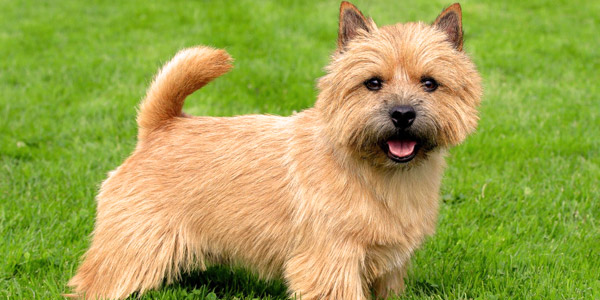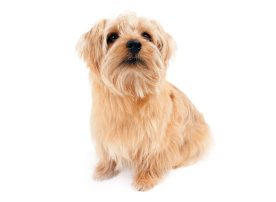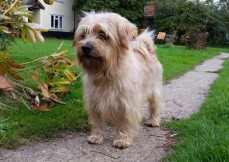Country of Origin: Great Britain, England
Dog Group: Terriers breeds (AKC)(UKC)
Origin of Name: The Norfolk Terrier originates from the east-central part of England called East Anglia, just north of London. The town of Norwich is in the county of Norfolk. He crossed the offspring with working terriers from Norwich, Cambridge and Market Harborough to develop a small, sturdy and fearless breed later recognized by The Kennel Club (England) in 1932 as the Norwich Terrier.
Shedding
A bit HighMonthly keeping cost
PremiumRs.8,000 Standard
Rs.6,000
Size
SmallBreed Info
Life Span: 12 to 15 years
Availability: Easy to get
About Norfolk Terrier
The Norfolk Terrier is what’s considered a “big dog in a small package.” Alert, gregarious, and nimble, he’s a loyal companion with the heart of a working terrier.
The Norfolk Terrier originates from the east-central part of England called East Anglia, just north of London. The town of Norwich is in the county of Norfolk. At the start of the 20th century, an Englishman named Frank “Roughrider” Jones - who had Glen of Imaal Terriers and a dark red brindle Cairn-type bitch - bred his dogs to a working terrier from Norwich named Rags. He crossed the offspring with working terriers from Norwich, Cambridge and Market Harborough to develop a small, sturdy and fearless breed later recognized by The Kennel Club (England) in 1932 as the Norwich Terrier. Contributing breeds probably included the Border Terrier, Cairn Terrier and possibly unnamed red terriers from Ireland.
Early in the breed’s history, there was substantial variation and fancier controversy over appropriate breed size, color, coat, ear set and overall type. The original Norwich Terrier standard encompassed both the up-ear and the down-ear varieties. Mating a drop-eared dog with a prick-eared one produced an unattractive intermediate ear which neither stood nor dropped reliably.
The Norfolk and Norwich Terriers are remarkably similar in appearance. Simple tricks are used by dog fanciers to differentiate the breeds, such as: 1) the Norwich Cathedral has a tall spire that sticks up into the air, like the ears of the Norwich Terrier; and 2) the Nor-wich has ears that stick up like a witch’s hat. Norfolks (and Norwich Terriers) make fabulous house and traveling companions and are competitive in the show ring.
Maintenance
Visits to Groomer- Low
Drooling- No
Bath- Rare
Tolerance to heat- Basks in it
Tolerance to cold- Loves snow
Exercise Requirement- Lots
Hair & Coat
Under Coat- Yes
Colour- Red, Grizzle, Wheaten, Black & Tan
Coat Type- Fluffy, Soft and Curly
Hair Length- Flowing
Hair Density- Sparse
Health
The Norfolk is generally a hearty dog. Like all breeds, though, the Norfolk is prone to some conditions.
Canine hip dysplasia
Patellar luxation
Vaccination sensitivity
More
Temperament
Norfolks are a classic terrier breed: fearless, strong, loving and independent. They are a bit more social than other terriers, as they were bred as pack dogs. They are still standoffish towards new people and other dogs, but they aren't as apt to bark their little heads off when they see something new. Norfolks make excellent family dogs as they consider their family to be their “pack” and will want to be included in as many group activities as possible. Their trainability and generally even temperament makes them a good choice for first time dog owners.
Training & Intelligence
Norfolks are easier to train that other terrier breeds. They are incredibly smart, and repetition can bore them, so make sure sessions are mixed up and kept lively to maintain interest. Positive reinforcement and treats are the best method for training this breed, as treating a terrier harshly will only lead to defensive behavior.
Breeding
Litter Size - 2 to 5 puppies (approximately)
Complication in Breeding-No
Procreation
Generally a dog takes around 18 months to reach his or her full height and structure. It is advisable to breed your dogs after at least two years of age. If you are a first timer at breeding then taking a vets help.
 DogExpress
DogExpress



















 in Chandigarh, India.
in Chandigarh, India. 

